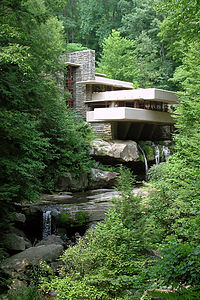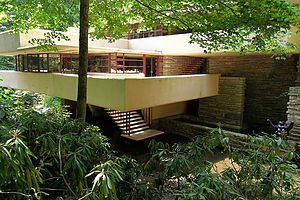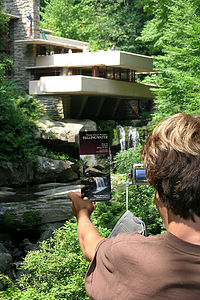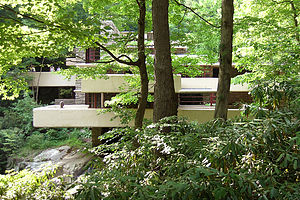- Home
- About
- Map
- Trips
- Bringing Boat West
- Migration West
- Solo Motorcycle Ride
- Final Family XC Trip
- Colorado Rockies
- Graduates' XC Trip
- Yosemite & Nevada
- Colorado & Utah
- Best of Utah
- Southern Loop
- Pacific Northwest
- Northern Loop
- Los Angeles to NYC
- East Coast Trips
- Martha's Vineyard
- 1 Week in Quebec
- Southeast Coast
- NH Backpacking
- Martha's Vineyard
- Canadian Maritimes
- Ocracoke Island
- Edisto Island
- First Landing '02
- Hunting Island '02
- Stowe in Winter
- Hunting Island '01
- Lake Placid
- Chesapeake
- Provincetown
- Hunting Island '00
- Acadia in Winter
- Boston Suburbs
- Niagara Falls
- First Landing '99
- Cape Hatteras
- West Coast Trips
- Burning Man
- Utah Off-Roading
- Maui
- Mojave 4WD Course
- Colorado River Rafting
- Bishop & Death Valley
- Kauai
- Yosemite Fall
- Utah Off-Road
- Lost Coast
- Yosemite Valley
- Arizona and New Mexico
- Pescadero & Capitola
- Bishop & Death Valley
- San Diego, Anza Borrego, Joshua Tree
- Carmel
- Death Valley in Fall
- Yosemite in the Fall
- Pacific Northwest
- Utah Off-Roading
- Southern CA Deserts
- Yosemite & Covid
- Lake Powell Covid
- Eastern Sierra & Covid
- Bishop & Death Valley
- Central & SE Oregon
- Mojave Road
- Eastern Sierra
- Trinity Alps
- Tuolumne Meadows
- Lake Powell Boating
- Eastern Sierra
- Yosemite Winter
- Hawaii
- 4WD Eastern Sierra
- 4WD Death Valley +
- Southern CA Deserts
- Christmas in Tahoe
- Yosemite & Pinnacles
- Totality
- Yosemite & Sierra
- Yosemite Christmas
- Yosemite, San Diego
- Yosemite & North CA
- Seattle to Sierra
- Southwest Deserts
- Yosemite & Sierra
- Pacific Northwest
- Yosemite & South CA
- Pacific Northwest
- Northern California
- Southern Alaska
- Vancouver Island
- International Trips
- Index
- Tips
- Books
- Photos/Videos
- Search
- Contact
Fallingwater, PA
Tuesday, August 2, 2005 - 6:30am by Lolo
300 miles and 6 hours from our last stop
Travelogue
 FallingwaterAs we continued our journey east, Herb asked the question that he always seems to ask when we enter Pennsylvania--"Why haven't we been to Fallingwater?" He followed this question with an accusatory look, implying that I am somehow to blame for this void in his travel experiences. Since I'm the one that plans the trips, I guess he had a point. I quickly looked through the piles of guidebooks we had along, but couldn't find anything about it--it's times like these that I really wish we had Internet access in the RV. However, since we didn't, I did the next best thing. I called a friend back home and got information on tours and most importantly, a phone number for reservations. Fortunately, we were able to book a tour for later that afternoon.
FallingwaterAs we continued our journey east, Herb asked the question that he always seems to ask when we enter Pennsylvania--"Why haven't we been to Fallingwater?" He followed this question with an accusatory look, implying that I am somehow to blame for this void in his travel experiences. Since I'm the one that plans the trips, I guess he had a point. I quickly looked through the piles of guidebooks we had along, but couldn't find anything about it--it's times like these that I really wish we had Internet access in the RV. However, since we didn't, I did the next best thing. I called a friend back home and got information on tours and most importantly, a phone number for reservations. Fortunately, we were able to book a tour for later that afternoon.
For those not familiar with Fallingwater, it's Frank Lloyd Wright's famous house built on top of a waterfall. The house was built for the Edgar J. Kaufmann family (of Kaufmann furniture fame) back in the 1930s. Members of the family lived in it until the 1960s, after which it was given to the Western Pennsylvania Conservancy to maintain and manage. Today it is open to the public for tours, and it is definitely well worth it.
We arrived about an hour early for our tour, so we spent the time wandering the lovely grounds over towards the viewpoint of the house below the waterfall. Unfortunately, photographing the house wasn't as good as we had hoped. The waterfall over which the house was built was barely flowing because of the summer-long drought that had hit most of the east coast, and there were workmen clambering about on ladders along the upper terraces smack in the middle of our pictures. So like all photos must, we captured the reality of the moment--or at least, that's how things used to work. We might have captured workmen on ladders, but Herb made them disappear with the wonderful technology of Photoshop. Unfortunately, he couldn't do much about the waterfall. That would be too much cheating.
 FallingwaterFallingwater was truly unique. The most notable feature was a series of cantilevered balconies protruding from every side and level of the house. Since there was no visible support, they seemed to just magically extend from the walls of the house. Frank Lloyd Wright believed in organic design, which meant that he wanted the structure to blend in and be a part of its surrounding environment. To accomplish this he used sandstone quarried right on the property so that it matched perfectly with the surrounding stone. Also the horizontal ledges of the balconies mimicked the rock ledges behind it. It reminded me of the way that some of the best National Park lodges (like Yellowstone, the North Rim of the Grand Canyon, and the Awahnee in Yosemite) also seem to be extensions of their surroundings rather than intrusions on it.
FallingwaterFallingwater was truly unique. The most notable feature was a series of cantilevered balconies protruding from every side and level of the house. Since there was no visible support, they seemed to just magically extend from the walls of the house. Frank Lloyd Wright believed in organic design, which meant that he wanted the structure to blend in and be a part of its surrounding environment. To accomplish this he used sandstone quarried right on the property so that it matched perfectly with the surrounding stone. Also the horizontal ledges of the balconies mimicked the rock ledges behind it. It reminded me of the way that some of the best National Park lodges (like Yellowstone, the North Rim of the Grand Canyon, and the Awahnee in Yosemite) also seem to be extensions of their surroundings rather than intrusions on it.
When the time came for our house tour, we were escorted by our very pleasant and knowledgeable tour guide into the home along with about 12 others--a very reasonably-sized group. Herb had to reluctantly part with his video camera at the entrance as no photography, either still or video, is allowed on this tour. There is another more in-depth 2-hour tour that does allow still photography.
 Tommy photographing FallingwaterWe immediately fell in love with the interior of the house, which didn't really feel like an interior at all, but rather, once again, an extension of the rocks and woods around it. The colors in the house were all earth tones. The floors were made of polished stone, like the stone surrounding the house. The hearth of the large fireplace in the living room was actually a boulder which protruded into the house. Most of the walls to the outside were made up of large casement windows so that there was always a great view outside. Also, every room lead out onto one of the large cantilevered balconies so there was always easy access to the outdoors. My personal favorite was the staircase leading down from the living room to a small platform on the stream, from which you could take a dip in the very cool waters. Everything about this house was a nature lover's paradise. It must have been an amazing opportunity for the Kaufmann's to have lived in it.
Tommy photographing FallingwaterWe immediately fell in love with the interior of the house, which didn't really feel like an interior at all, but rather, once again, an extension of the rocks and woods around it. The colors in the house were all earth tones. The floors were made of polished stone, like the stone surrounding the house. The hearth of the large fireplace in the living room was actually a boulder which protruded into the house. Most of the walls to the outside were made up of large casement windows so that there was always a great view outside. Also, every room lead out onto one of the large cantilevered balconies so there was always easy access to the outdoors. My personal favorite was the staircase leading down from the living room to a small platform on the stream, from which you could take a dip in the very cool waters. Everything about this house was a nature lover's paradise. It must have been an amazing opportunity for the Kaufmann's to have lived in it.
Before leaving, we stopped in the gift shop to see if we could get a hat pin to add to our collection. We soon found that this was no mere tacky gift shop, but an impressive museum shop filled with collectibles relating to Frank Lloyd Wright or Fallingwater in some way. There were beautiful lamps, dishes, clocks, furnishings, jewelry, etc. There wasn't a snow globe to be found.
Our last highlight at Fallingwater was found in the restrooms. As we sat on the benches outside the museum shop, a noise very much like that of a jet engine would periodically emanate from the restroom, followed by a person walking out of the door. After this pattern repeated itself about half a dozen times, the boys just had to have a look-see. What they discovered inside was a very powerful, turbo-charged hand dryer that actually dried your hands without having to wipe them on your pant legs. During their absence, Herb and I heard the roar of the jet engines going off again and again and again with no one exiting in between. Gee, I wonder why.
Description
Frank Lloyd Wright's Fallingwater is one of the most famous works of architecture in the United States. Wright designed it in 1935 as a vacation home for the Edgar J. Kaufmann family. In designing their home, Wright tried to satisfy the Kaufmann family's love of nature by building the house directly over the waterfall and stream on their property in Mill Creek, Pennsylvania. It is a masterpiece of modern architecture and a symbol of the importance of living in harmony with the natural world.
 FallingwaterFrank Lloyd Wright is considered one of the greatest architects of the 20th century. However, his unique and non-traditional style, which you can see in the design of Fallingwater, also made him one of the most controversial. Wright believed that a building should not be a static structure, but rather a dynamic one that relates to its natural surroundings. This principle, which is known as organic architecture, tries to promote the harmony between man and nature by having the building and its furnishings blend in with its surroundings.
FallingwaterFrank Lloyd Wright is considered one of the greatest architects of the 20th century. However, his unique and non-traditional style, which you can see in the design of Fallingwater, also made him one of the most controversial. Wright believed that a building should not be a static structure, but rather a dynamic one that relates to its natural surroundings. This principle, which is known as organic architecture, tries to promote the harmony between man and nature by having the building and its furnishings blend in with its surroundings.
Fallingwater not only blends in, but it almost seems to mimic its surroundings. The series of horizontal balconies protruding from it appear to be extensions of the rock ledges around it. Also the materials from which the walls were constructed were Pottsville sandstone quarried right on the property. This was the same type of sandstone as the rock ledges surrounding the house, making it blend in even more perfectly.
Interestingly, the balconies seemed to just magically extend unsupported from the walls of the house, like a series of trays. Wanting to avoid vertical supports, Wright used a technique known as cantilevering, in which the balconies were only supported on one end--the wall of the house. There are several of these balconies at different levels and orientations, providing almost as much floor space as the interior of the house.
Even the interior of the house blends in with its surroundings. The colors in the house, in keeping with the nature theme, are all earth tones. The floors are all made of polished stone, like the stone surrounding the house. The hearth of the large fireplace in the living room is actually a boulder which protrudes into the house. Unlike the high ceilings found in many impressive homes, Wright kept the ceilings of Fallingwater low so that your eyes would be guided outside towards nature rather than up. Most of the walls to the outside are made up of large casement windows so that there is always a great view outside. Also, every room has one of the large cantilevered balconies off of it so that it is easy to have access to the outdoors. There is even a staircase leading down from the living room to a small platform on the stream from which you could take a dip in its cool waters.
In 1963, Edgar Kaufmann, Jr. gave the house to the Western Pennsylvania Conservancy under the condition that they preserve it and open it for public visitation. Today, tours are available on Tuesdays - Sundays from mid-March through Thanksgiving. The most popular tour is the regular tour, which lasts approximately one hour and includes all of the major rooms of the house. Ticket prices are: Weekdays: Adults $13.00, youth 6-18 $ 8.00 and Weekends: Adults $15.00, youth 6-18 $10.00. For more detailed information on all their tours and to make advance reservations, go to www.paconserv.org.
- ‹ previous
- 21 of 23
- next ›
Fallingwater location map in "high definition"
Javascript is required to view this map.
